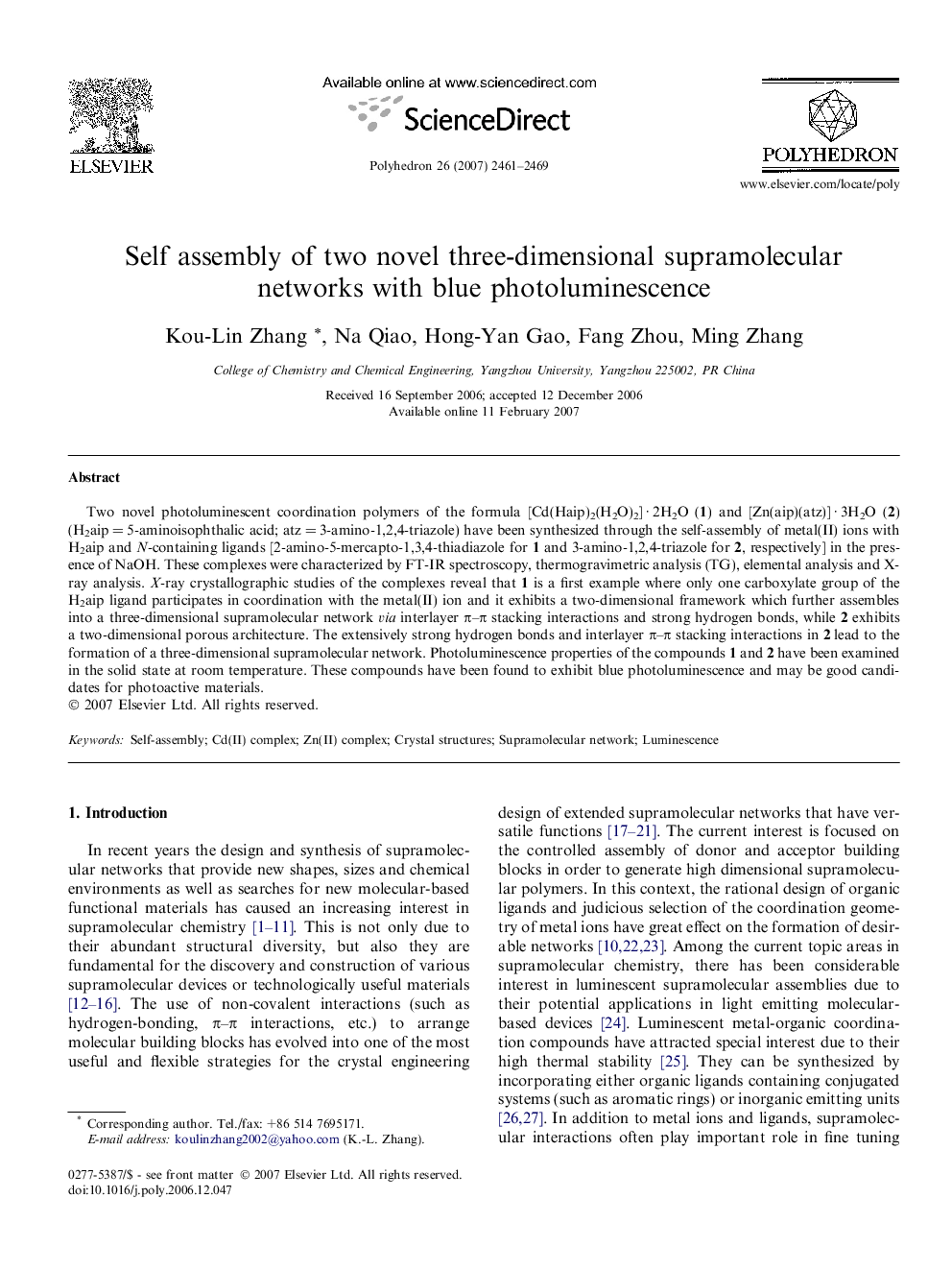| Article ID | Journal | Published Year | Pages | File Type |
|---|---|---|---|---|
| 1339797 | Polyhedron | 2007 | 9 Pages |
Two novel photoluminescent coordination polymers of the formula [Cd(Haip)2(H2O)2] · 2H2O (1) and [Zn(aip)(atz)] · 3H2O (2) (H2aip = 5-aminoisophthalic acid; atz = 3-amino-1,2,4-triazole) have been synthesized through the self-assembly of metal(II) ions with H2aip and N-containing ligands [2-amino-5-mercapto-1,3,4-thiadiazole for 1 and 3-amino-1,2,4-triazole for 2, respectively] in the presence of NaOH. These complexes were characterized by FT-IR spectroscopy, thermogravimetric analysis (TG), elemental analysis and X-ray analysis. X-ray crystallographic studies of the complexes reveal that 1 is a first example where only one carboxylate group of the H2aip ligand participates in coordination with the metal(II) ion and it exhibits a two-dimensional framework which further assembles into a three-dimensional supramolecular network via interlayer π–π stacking interactions and strong hydrogen bonds, while 2 exhibits a two-dimensional porous architecture. The extensively strong hydrogen bonds and interlayer π–π stacking interactions in 2 lead to the formation of a three-dimensional supramolecular network. Photoluminescence properties of the compounds 1 and 2 have been examined in the solid state at room temperature. These compounds have been found to exhibit blue photoluminescence and may be good candidates for photoactive materials.
Graphical abstractTwo novel coordination polymers [Cd(Haip)2(H2O)2] · 2H2O (1) and [Zn(aip)(atz)] · 3H2O (2) (H2aip = 5-aminoisophthalic acid) with blue photoluminescence have been synthesized through the self-assembly of metal(II) ions with H2aip and N-containing ligands [2-amino-5-mercapto-1,3,4-thiadiazole for 1 and atz (3-amino-1,2,4-triazole) for 2]. 1 is a first example where only one carboxylate group of H2aip ligand coordinates with the metal(II) ion and exhibits a 2D framework, which further assembles into a 3D supramolecular network via interlayer π–π stacking interaction and hydrogen bonds. 2 exhibits a 2D porous architecture. The hydrogen bonds and interlayer π–π stacking interactions in 2 lead to the formation of a 3D supramolecular network.Figure optionsDownload full-size imageDownload as PowerPoint slide
